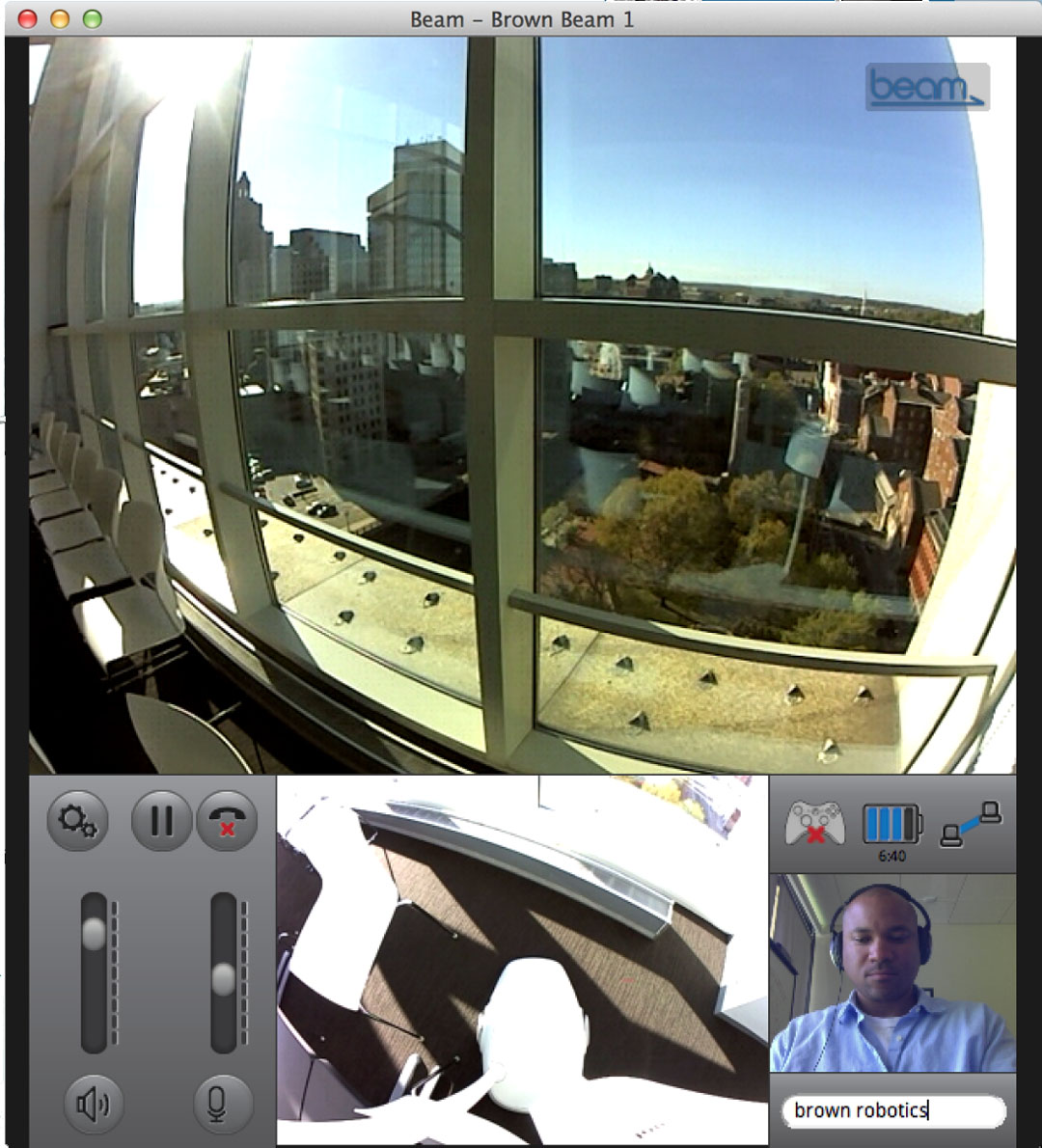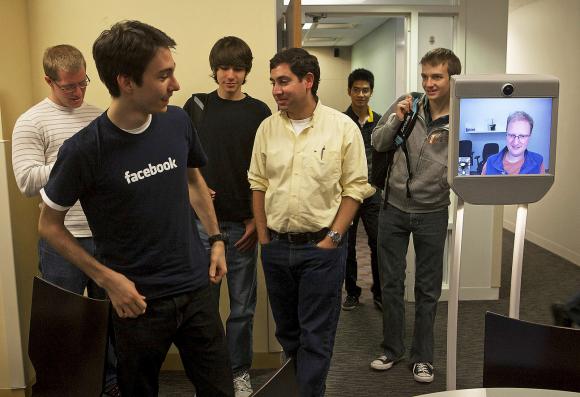PROVIDENCE, R.I. [Brown University] — While in California on a sabbatical last school year, Chad Jenkins, associate professor of computer science, wanted to stay in close contact with his colleagues and research group back in Providence. But trips back and forth were time-consuming, and Jenkins, a roboticist by trade, never felt adequately able to connect with people over Skype.
His solution was to tap into the emerging technology of remote telepresence. These mobile robotic devices enabled Jenkins to virtually roam the halls of Brown’s Center for Information Technology while he worked in the offices of Willow Garage, a California robot maker. Based on his experience and the immersive capabilities of these devices, Jenkins believes that robotic telepresence has the potential to “change the geography of labor” in the United States and around the world.
“If someone wants to live in South Dakota where it’s cheaper but wants to work in Silicon Valley or Providence, that can happen,” Jenkins said. “And as an employer, I want to be able to recruit around the globe. If I can pull talented people from Tuscaloosa or Flint or Rapid City or Silicon Valley without forcing them to move, that’s a big thing.”

Jenkins used two commercial devices during his time away: one called the VGo, and the more sophisticated Beam Remote Presence System. The Beam has a 17-inch monitor perched atop a chassis that looks a bit like a Segway scooter. An array of cameras, speakers and microphones allows a user, or “pilot,” to be immersed in a remote location over a web interface.
The devices enabled Jenkins to do things that simply can’t be done through Skype or passive video conferencing. He could physically mull around his lab remotely, talk with students, and look over their shoulders while they worked. He could have impromptu discussions with people as he passed them in the hall. He even participated in a student’s dissertation defense from his computer in California.
Even the things that could be done through Skype, like attending meetings, were “so much more engaging through the Beam,” Jenkins said.
Now that he’s back on campus, Jenkins plans to continue to make use of remote presence. “It’s a way of expanding the global reach of our lab,” Jenkins said. “You can’t really show people around a lab with Skype in an immersive way, but we can do it using the Beam. Collaborators, colleagues, prospective students, citizen scientists, and others can Beam in and we can show them around.”
Last week, Josh Tyler, director of software development for Beam maker Suitable Technologies, Beamed in to discuss the new technology with Brown students. “Remote presence is still a fairly new thing,” Tyler told the students. “We think we’re in the early days of something that’s going to be very big. Chad was one of our first customers and he’s given us a lot of feedback.”
Jenkins sees remote presence technology as something of a bridge toward an expanded use of robots in people’s everyday lives.
“This is really a way to take information technology and extend it to the physical world. That’s what robotics really is,” he said. “Computing and telecommunications let us exchange digital information, but we’re still only passive observers. What we really want is to be able to actually do things in the physical world remotely. This technology moves us toward that goal.”

